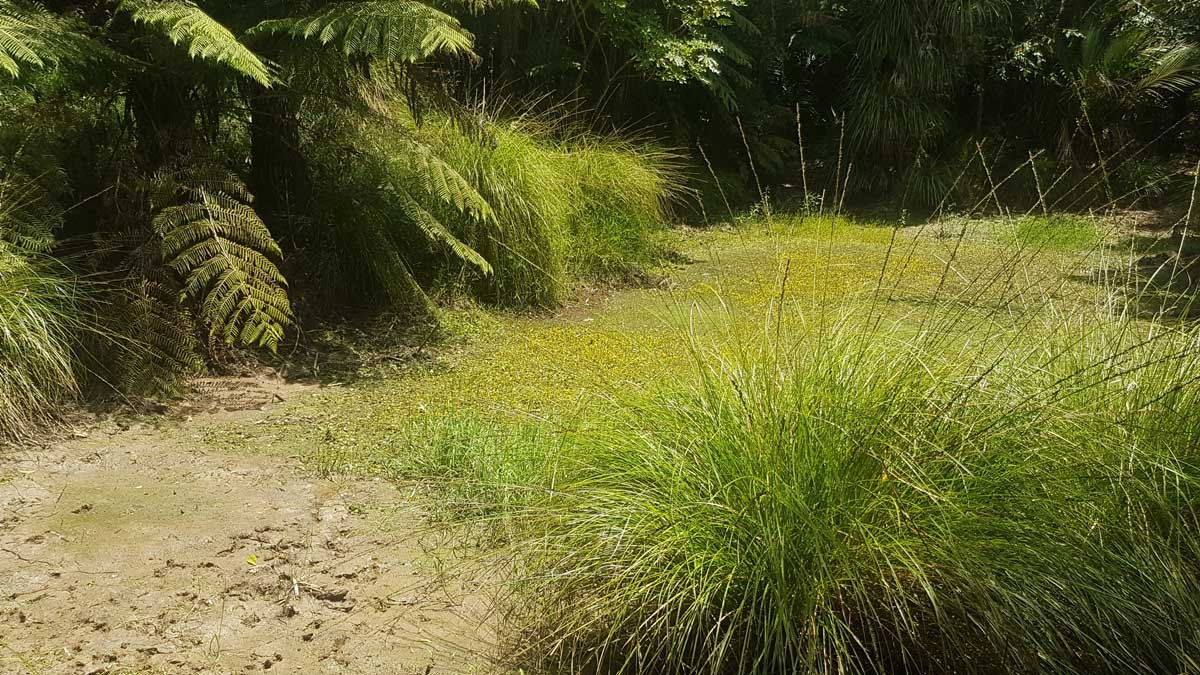We’ve had this question a lot – and it’s a question I’m glad people care enough to ask – how are we doing in the drought?
Northland’s drought was declared last month. There are definitely people, farms, and businesses doing it hard because of it. But the truth is, we’re doing OK. The header image at the top of this blog was taken in mid-February 2020 (for comparison, here’s December, and here’s November). It’s definitely browner, but it’s also still quite green.
Unlike many, we have seen rain in the last couple of months. Granted – a lot less rain than we are supposed to see at this time of year – but we have seen some (and we’re always grateful for it).
The topography and position of bush and streams around our property means we aren’t entirely dry right now. Different paddocks are coping differently, but overall, they’re doing well. Our grass is still pretty green – and it’s still growing.
The data
I purchased a digital weather monitoring station when it became clear we were going to buy this property. I installed it (in the rain) on the day after we took possession to give us the best possible dataset. My major at uni was in geography, so the data is important to me. It’s not fool-proof, but it gives us a fair idea of where we sit, and is establishing a data history of the climate at this property.
So far, we’ve had a couple of data holes caused by power outages and spider’s webs in the rainfall measuring device. Using NIWA stats for Kaeo as our ‘establishing’ averages, and filling in the information gaps with some council data from nearby, our rainfall so far looks a bit like this.

Where it’s green, we’ve had more rain than average. Where it’s red… well. There’s no denying we are in a drought right now.
In saying that, we’ve had over 30mm in the first week of March. We had more rain on one day this week than we had during the entire month of February. For now, March is on-track to maybe get near its average rainfall.
But even with the rainfall deficit, we have enough water in the tank to get us through a few more months. We haven’t had to fill our tank with a truck. That’s definitely helped along by the fact we’ve been on self-imposed water restrictions since we got here. Our water is collected off a very small roof, so we have to be careful. We’ll have to continue with this until we have more roof to collect from.
The trees we’ve planted so far are mostly surviving, if not thriving. They get some water when we muck out the duck pool every 5 or 6 days. The duck pool itself is filled from a trough-supply we have property rights to (which is also not looking too bad).
For now, we have more than enough grass for the cows, because we don’t have many cows. If we were fully-stocked, we might be in trouble. Our paddocks are almost exclusively kikuyu or gorse, and for better or for worse both are drought tolerant. The grass is dying back and drying off though, so we’re making sure they get salt block supplements to help them cope with that.
In the bush, it looks dry, which brings the additional risk of fire. Our bush pond has proven itself to be a rain-filled pond, and the levels have dropped significantly. But the replantings the former owners did are still surviving.

The bush pond in October

The bush pond in January (taken standing inside the pond)
So yes, we are feeling the drought here this year. But we can see there are others in much worse positions than we are in. Most of Auckland and North Waikato looked worse when we traveled through a few weeks ago. We should make it through OK to May, when they’re saying this thing will break.
I’ve been studying the geography and climate of Northland in some capacity since 2007. I chose this place to settle on purpose, but it is prone to drought. I’ve observed that the years that don’t have drought are often the ones where a few tropical cyclones drop down from the Pacific during summer. This is the second year in a row with no tropical cyclones.
One thing I’ve observed on this property specifically is that it’s in a really good position to make the most of the water that does arrive. With a combination of some new dams and swales, we’d be able to store far more water, and use what we get more efficiently.
At the moment, everything that hits us is neatly drained off into some surrounding streams. But we can change these drainage schemes and hold onto the water for longer. This means we should be able to design our way to drought resilience.
The next challenge will be to get that right.


